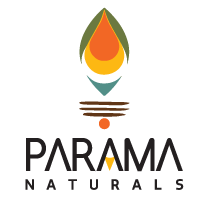Turmeric Shakti - 19 benefits and counting!
Have you ever wondered about why Turmeric is considered as the cure-all for most ills in India?
Have you ever wondered why Turmeric is considered as the cure-all for most ailments in India? In my journey towards bringing the goodness of the powerhouses of nature into our daily routines, I noticed that most arrows pointed in the direction of this wonder called “turmeric”. In fact, I could almost visualise it as Mother Goddess Turmeric Shakti with 10 arms, each wielding a powerful weapon!!

Turmeric is omnipresent in our lives in India. Known as Haridra in Sanskrit, Haldi in Hindi, Halad in Marathi and Manjal in Tamil, it is one of the most common herbs or spices used across almost all culinary, social, religious and cultural traditions in India since time immemorial. The bright yellow of this “Golden Spice” has become synonymous with India and Indian curries. The earliest use of Turmeric can be traced back to the Indus valley civilization (3000 BCE). In fact, one of the most popular deities in India--Lord Ganesha, the elephant-headed God who is considered to be the remover of obstacles and meant to be invoked before starting any new venture--has a strong association with Turmeric. "Haridra Ganapati" is one of the 32 versions of Ganapati worshipped in India.
Turmeric's all-pervasive presence is probably on account of its over-arching properties. Turmeric and its key constituents, curcumin and turmeric essential oil containing turmerones and other active ingredients, have demonstrated a wide spectrum of benefits and biological actions. Hence, it is used as a preventive and as a curative. In fact, it is probably due to this aspect that despite its bitter and astringent taste, it is an essential ingredient in Indian (and many Asian) culinary and other traditions. And haldi-doodh (manjal-paal/ turmeric-latte) is the first go-to in every home the moment one detects a slight sniffle, a wound or a depletion in immunity.
The therapeutic and medicinal properties of turmeric are defined as follows:
- Anti-inflammatory
- Antioxidant
- Antiseptic
- Anti-bacterial
- Anti-viral
- Antifungal
- Antiprotozoal
- Anti-anxiety
- Hypotensive
- Relaxing
- Stimulating
- Carminative
- Anti-fibrotic
- Anti-ulcer
- Anti-coagulant
- Anti-diabetic
- Hypercholesteraemic
- Anti-carcinogenic
- Anti-mutagenic
Turmeric is not just a must-add ingredient in all food. It is also used in topical applications for preventive, cosmetic or therapeutic uses and is inextricably woven into each and every bit of the fabric of the Indian culture.
(Read more about how turmeric is all-pervasive in the Indian culture in our blog "Haldi Ubtan Reimagined".
References -
Some research which I found very useful, especially those that are able to demystify these in the A^A^B world (Ayurveda, Aromatherapy and Botanicals or the traditional Indian, traditional western and modern western medicine) are –
- https://www.researchgate.net/publication/266012435
- https://www.ncbi.nlm.nih.gov/pmc/articles/PMC3195121/
- https://www.sciencedirect.com/science/article/abs/pii/0378874195013202
- https://www.ncbi.nlm.nih.gov/pmc/articles/PMC6358877/
- Ayurveda and Aromatherapy by Dr Light Miller & Dr Bryan Miller

BLESSINGS WORLD IS CATCHING UP & U R PIONEER IN NANONEUTRICALS